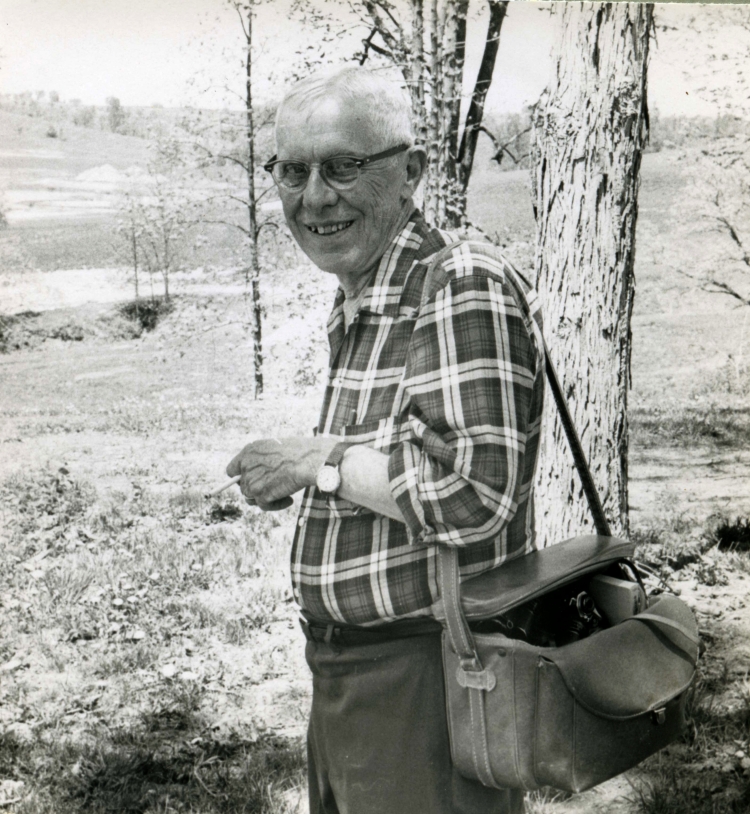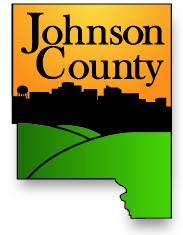
People frequently ask about F. W. Kent – the man whom conservation officials chose to honor by naming the largest county park after him. F. W. Kent Park is now a 1,062 acre park located two miles west of Tiffin on the north side of Hwy. 6.
Frederick (Fred) Wallace Kent was best known as a versatile and talented photographer who documented everything from family and community life to landscape and natural vistas in Iowa, particularly in Johnson County.
He began what he described as a “lifelong love affair with photography” when he got his first Kodak Brownie Box Camera at the age of 14 in his hometown of Dewitt, IA. Fred made a darkroom in his father’s drug store and two darkrooms at home. He apprenticed with a local photographer and made postcards for local towns while he was in high school.
By the time he started as student at the University of Iowa, in the fall of 1911, he was already an accomplished professional photographer. Fred brought an old 5x7 camera and tripod with him and, as he stated: “I had to make a go of it, so I started taking pictures.”
He was able to move from a small room to a larger room at the old Townsend Studio on Clinton Street in Iowa City where fired the furnace, took care of the cleaning and sweeping, and utilized a primitive dark room in the basement. He concentrated on taking pictures of campus life and football games. This enterprising student was designated as the official photographer for all UI athletic events in his sophomore year.
Following graduation in 1915 he became the official photographer for all University events - a position he held until his retirement 47 years later.
The importance of Fred Kent’s work goes beyond his many years of producing students’ graduation photos and recording sporting events. His detailed photographs of the 1922 restoration of Old Capitol on the University of Iowa campus aided in subsequent restorations of the building. His technical and artistic photo abilities were important in medical, engineering, biology and ornithology research.
Fred photographed everyday scenes and the extraordinary. He pioneered the use of stereographs in medicine, producing three-dimensional pictures for doctors. Eastman Kodak commissioned him to write the first manual for medical photography, in 1947. Fred also held the honor of becoming the first recipient of the Iowa City Historic Preservation Commission Award, in 1984, for documenting the growth of the area through his photographs. He died that year at age 90.
Of the tens of thousands of images he created, Fred considered his most famous to be the now ubiquitous pose of Nile Kinnick ready to pass the football, which he recorded in 1939, the year Kinnick was named All-American.
His meticulously labeled collection of family albums, travel albums, nature scenes, audio tapes, negatives, letters, diaries and his camera collection were donated to the State Historical Society.
In addition to his photography, Fred was a man of many interests including: birding, music, wireless radio, stamp collecting and gardening. He maintained thorough and methodical records of birds he observed on nearly 3,500 bird watching trips. He shared his love of birding with his son Tom and together they published Birding in Eastern Iowa in 1975. His interest in the natural world led to a lifetime of rambling in the countryside and canoe trips from which he “knew Johnson County inch by inch.”
In 1964 the voters of Johnson County approved the establishment of the Johnson County Conservation Board (JCCB)) and the Board held its first meeting in January, 1965. In January, 1966, they allocated funds to develop their first park known as the Scott Church Area. Fred shared his knowledge of interesting properties, which would be suitable for wildlife habitat and park development, with the members of the fledgling JCCB.
In March, 1966, the Board acquired 186 acres of land from Robert Larew in Section 24, Oxford Township. Then, in July, 1966, the Board moved to negotiate with L. Dwight Woods for 21.83 acres of his land, adjacent to the Larew property, for the purpose of constructing a lake on the land purchased from Larew. This became the nucleus of what is now known as F. W. Kent Park.
According to the minutes of the May 18, 1967, meeting of the JCCB, James Speer, St. Charles, IL (who was engaged as the site planner for the Larew-Woods property) made the suggestion - in his opening comments - that the area should be given a name. Discussion followed with a motion by Board Member Dr. Webster Gelman and second by Board Member Mrs. Martin Schwegler that the property be called “F.W. Kent Park” and that the Secretary cast a unanimous ballot.
From that moment on, the area became known as F. W. Kent Park. Since that time, the park has grown to 1,082 acres and is often simply referred to as “Kent Park.”
Sources
Mary Bennett, ”The Man Behind the Camera: Fred W. Kent,” The Palimpsest, Fall 1994, p. 102-131
Johnson County Conservation Board Minutes, May 18, 1967, 7:35 p.m.
Photos provided by the State Historical Society
